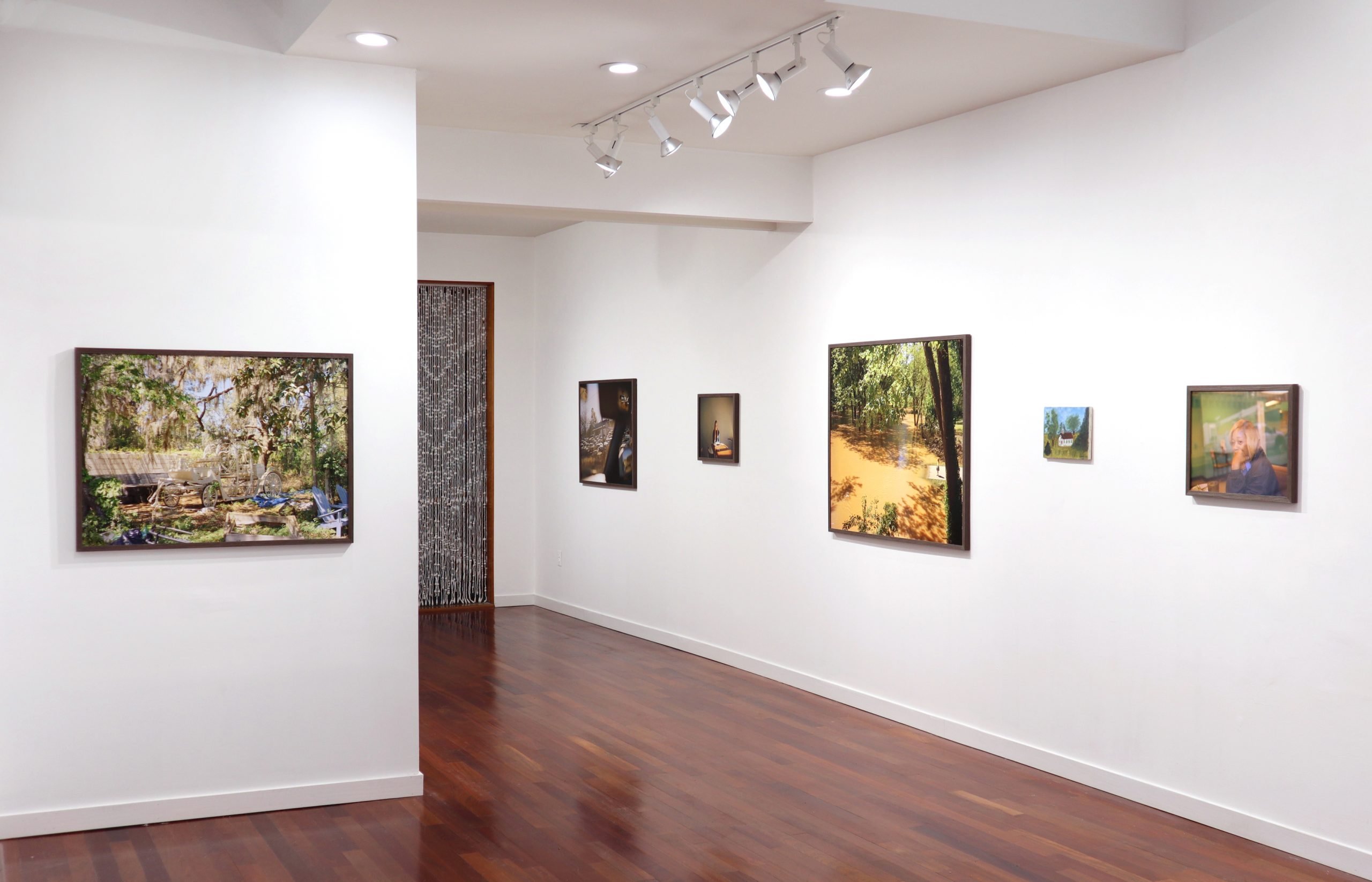
Located in the Bolton Hill neighborhood of Baltimore, Maryland, in a renovated townhouse, CPM Gallery has grown to be a recognized cornerstone of the vibrant—and growing—art scene of the city. Helmed by Vlad Smolkin, CPM (which stands for Critical Path Method) has carved its own path, one that doesn’t wholly ascribe to the traditional gallery models of those found in major art centers like New York or small-scale regional locales. Instead, CPM’s program could be described as integrated, fostering and promoting artists and critical discourse on both the micro and macro scale—recognizing the value of leveraging local community as well as engaging with the greater, international art world.
We caught up with Smolkin to learn more about his and the gallery’s background, as well as what’s on the horizon for CPM.
Esther Kläs, BAL / Marble Step (2024). Courtesy of CPM Gallery, Baltimore.
After 10 years working in the art world in New York, most recently as Director of Peter Blum Gallery, what led you to found CPM Gallery in Baltimore in 2020? Can you tell us a bit about what went into the decision?
I grew up in Baltimore and had an intuition to reconnect with the city, help grow the art scene, and be closer to family. Things are slower in Baltimore than New York, and this lends itself to how I want to work with artists and make exhibitions. We have a guest suite above the gallery where artists from around the country and the world can stay and have a longer engagement with the space and the city. My idea was to give artists more time, which would hopefully lead to less compromise and more site-specificity. Currently, the German artist Esther Kläs is staying here in preparation for our upcoming show that opens September 6.
What is something you’d like people to know about the Baltimore art scene?
Baltimore has a lot of amazing artists and there is a kind of renaissance happening here when it comes to the work being produced. A goal of the gallery is to give a platform for some of these artists and contextualize them within the greater art world. The collector base is growing here and there are great institutions—the Baltimore Museum of Art has a group of fantastic curators. It is important to note that Baltimore is a predominantly Black city located on the Mason-Dixon line, which historically divided the North and the South. Part of the aim of my program is to engage with this city’s complicated and fascinating history.
Installation view of “Akea Brionne: Janus” (2023). Courtesy of CPM Gallery, Baltimore.
You’ve described considering galleries in a more “decentralized” manner—can you expand on this? How is this reflected in the gallery’s own ethos?
I wanted to open a gallery outside of a major art center that can participate both very locally and within the greater critical conversations existing around art and galleries internationally. The art centers attract talent from smaller places because they give them a viable opportunity to sustain themselves. I believe that keeping some of the creative energy produced by artists in the places where those ideas originated is a good thing, and the only way to do that is to help it make sense for them financially and critically.
Recently, I held a solo exhibition with the fantastic young artist Akea Brionne, who shows her work around the country but has roots in Baltimore. And there will be an upcoming show later this fall with Devin Morris, who also grew up in Baltimore and recently participated in the Studio Museum in Harlem Artist-in-Residence Program in New York. I also invite curators from out of town to make exhibitions at the gallery. The last exhibition was curated by art critic Seph Rodney and featured work by Chakaia Booker, Leonardo Drew, and Trenton Doyle Hancock.
Pooneh Maghazehe, Morning Sands II (2021), CPM Editions. Courtesy of CPM Gallery, Baltimore.
Can you tell us more about CPM Editions? What do you look for when it comes to collaborating with artists in this way?
Publishing editions has been a goal from the beginning. I approach artists with ideas for editions that challenge them to examine their work from a new position. My first edition was a suite of four drypoint prints by the Iranian American artist Pooneh Maghazehe, who is a sculptor that often works with duplication. She had never made prints before and the edition was a way for her to think about multiplicity in another way. Last year, I made an edition with the Ukrainian born artist Luba Drozd, who makes site-specific sound and light installations. For the edition, we made 12 cases that housed the components and instructions to create sound, existing both as sculptures and sound installations.
CPM Gallery Director Vlad Smokin (left) with artist Luba Droz (right) with Franconia Notch (2023), CPM Edition. Courtesy of CPM Gallery, Baltimore.
Looking ahead, are there any forthcoming exhibitions on the horizon that you can share with us?
My upcoming fall exhibitions exemplify the scope of my program. On September 6, I will open a solo show with Kläs, and in November a solo show with the Baltimore-born artist Devin Morris. Both artists have been working with CPM Gallery with a heightened sensitivity to what it means for their work to be considered in this slower way in Baltimore—and I’m excited to see what they make!
Conversation with Seph Rodney, Vlad Smolkin, and Cara Ober, accompanying the exhibition “MATERIAL” (2024). Courtesy of CPM Gallery, Baltimore.